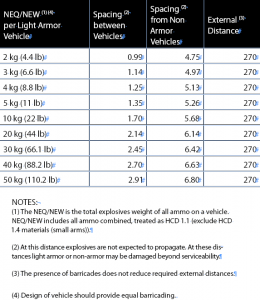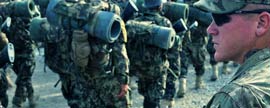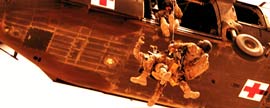Click the link to find your copy of Beans to Bullets Logistics for the Non-Logistician
Soldiers tend to view ammunition as just another supply that is needed for the mission. It feels very routine to pick up, store, transport and deliver ammunition in small quantities and conduct business as usual with the vehicles (parking near DFAC, parking near fuel sources and generators, etc.) Ultimately, once a vehicle has ammunition it must do many things differently.
Two of the most common mistakes with vehicles occur when Soldiers attempt to pick up the ammunition from the ASP or AHA. The Soldiers will go to the AHA in order to acquire a significant amount of ammunition but will not take cargo straps or adequate personnel to engage in the necessary labor. The receiving unit is responsible for the physical work required to load the ammunition as well as the straps to secure it.
The other thing that can go wrong when arriving at the ASP is arriving in a vehicle that does not pass a basic PMCS. Any fluid leaks, petroleum canisters in the cargo area, damaged/missing lights, mirrors and signals could all result in being turned away from the ASP without the ammunition. Assume zero risk with vehicle readiness as a rule but when transporting ammunition there can be no exceptions. A lack of a charged and inspected fire extinguisher is definitely a no-go.
Parking near the DFAC, particularly during contingency operations, is a daily occurrence. However, once ammunition is on board, minimum safety distances should be observed. Unsurprisingly the prescribed distances increase with the quantity of ammunition. This chart from the US Army Technical Center for Explosives Safety “Tactical Explosives Safety Quick Reference Guide” provides a basic guideline to help determine appropriate distance. Note that the distances are in meters. For this chart an up armored HMMWV is considered “light armor”.
Light Armor Vehicles Table of Distances
(Distances in meters)

For More Information on this subject see the following resource(s):
Beans to Bullets Logistics for the Non-Logistician
Please Read! Help Us Help Others!
If you think this site is useful please tell your peers, subordinates, and superiors. Also we are always looking for examples, classes, briefings, SOPs, templates and other information we can share for free in the ASKTOP.net Armsroom. Please help us help others by sending your ARMS ROOM stuff to: mark.gerecht@mentorinc.us














